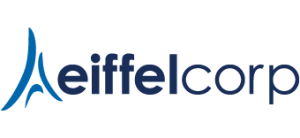
Amidst a plethora of options for plagiarism detection tools in today’s educational market, discerning the appropriate one that aligns with your instructional objectives and student needs is crucial.
On the usage of “plagiarism checker”:
The phrase “plagiarism checker” carries a somewhat negative connotation and infers an accusatory stance, a sentiment not typically embraced by Turnitin. Rather than directly identifying plagiarism, Turnitin generates similarity reports, leaving the final judgement on the originality of the student’s work to the educators and institutional leaders. We understand the commonality of the term about similarity detection tools and acknowledge its general application.
Researchers have posited, “The act of detecting plagiarism is fundamentally an academic judgement, contingent on numerous factors and best left to skilled academics” (Meo & Talha, 2019). Scholars like Foltynek, Guerrero-Dib, and Weber-Wulff have distinguished between plagiarism and text similarity, advocating for human analysis over mere percentages when evaluating student work (Foltýnek, et al., 2020).
Selecting the correct similarity-checking instrument can be challenging for educational leaders. How, then, does one choose the best tool that transcends simple similarity identification, offering an opportunity for growth, and transforming instances of plagiarism into educational opportunities?
Key considerations in assessing plagiarism detectors and similarity identification tools:
Educational leaders should contemplate various pedagogical criteria when selecting such tools. An Edutopia article outlines these as efficacy, student experience, intrinsic motivation, Zone of Proximal Development, and teacher experience (Miller, 2020).
Efficacy:
The effectiveness of a tool in fostering academic integrity and enhancing learning is paramount. Objective academic research and user testimonials can provide clear insights. Turnitin Feedback Studio has been recognized for its efficiency in mitigating plagiarism (Li, et al., 2021; Kostka & Maliborska, 2016; Batane, 2010; Baker, et. al., 2008).
Student experience:
A suitable tool should cater to diverse student needs, ensuring accessibility and ease of use, to foster positive and consistent use. Research has evidenced positive student perceptions towards Turnitin as a beneficial academic tool (Steppenbelt & Rowles, 2009).
Intrinsic motivation:
A tool should facilitate learning, allowing students to set goals and receive feedback. Turnitin, for instance, has been shown to aid students in identifying knowledge gaps and enhancing their academic writing abilities (Orlando, 2018).
Zone of Proximal Development:
Tools that aid in bridging the gap from what learners can do alone to what they can achieve with guidance, thus supporting the ZPD, are essential. Research suggests Turnitin does this effectively (Steppenbelt & Rowles, 2009).
Teacher experience:
Tools must aid teachers in evaluating work and guiding students, while also being user-friendly. Testimonials from educators reflect the positive impacts of Turnitin in the academic environment.
When assessing similarity detection tools, it’s essential to consider factors such as coverage, usability, and the ability to detect AI-generated content. Turnitin and its acquired entities (Unicheck, Plagscan, Urkund) have been noted for their comprehensive coverage and user-friendly interfaces (Foltýnek, et. al., 2020).
As educators, our objective extends beyond detecting potential plagiarism. We aim to equip students with an understanding of originality and proper citation practices. The ultimate goal is deterrence and educational reinforcement rather than mere detection.
Conclusion:
In choosing a solution for your institution, consider whether the tool provides feedback, automates revision support, fosters student growth, and aligns with teaching best practices.
In conclusion, when exploring options for a plagiarism detection tool, ensure that it not only scans for similarity but also promotes a deeper understanding and application of academic integrity within the educational journey.
This blog originally featured on Turnitin’s website, and was adapted by Eiffel Corp.



